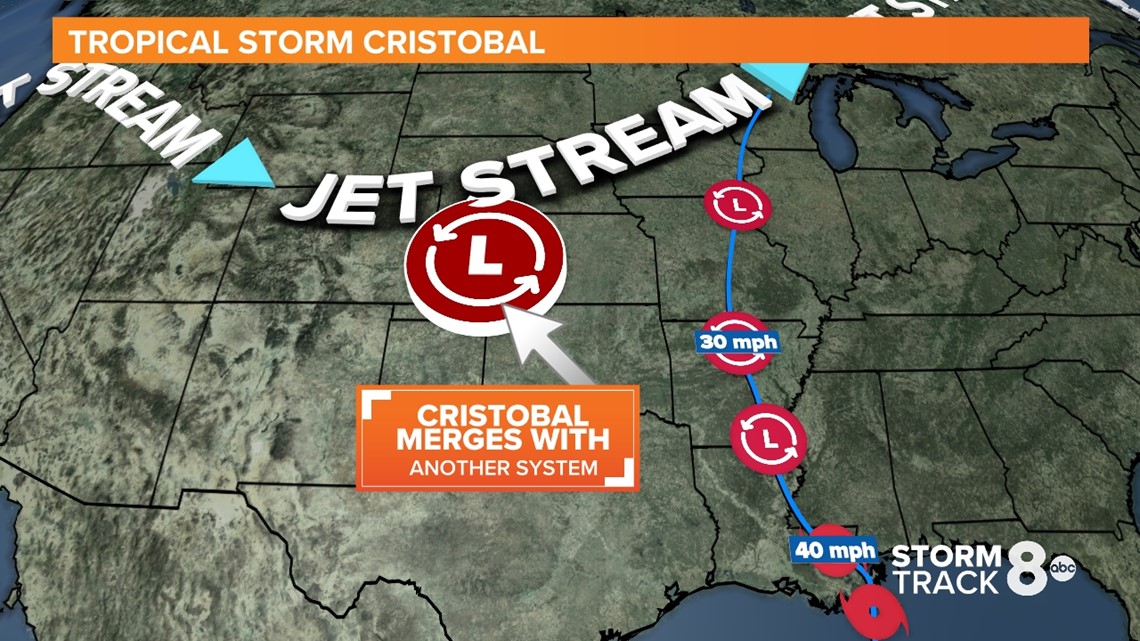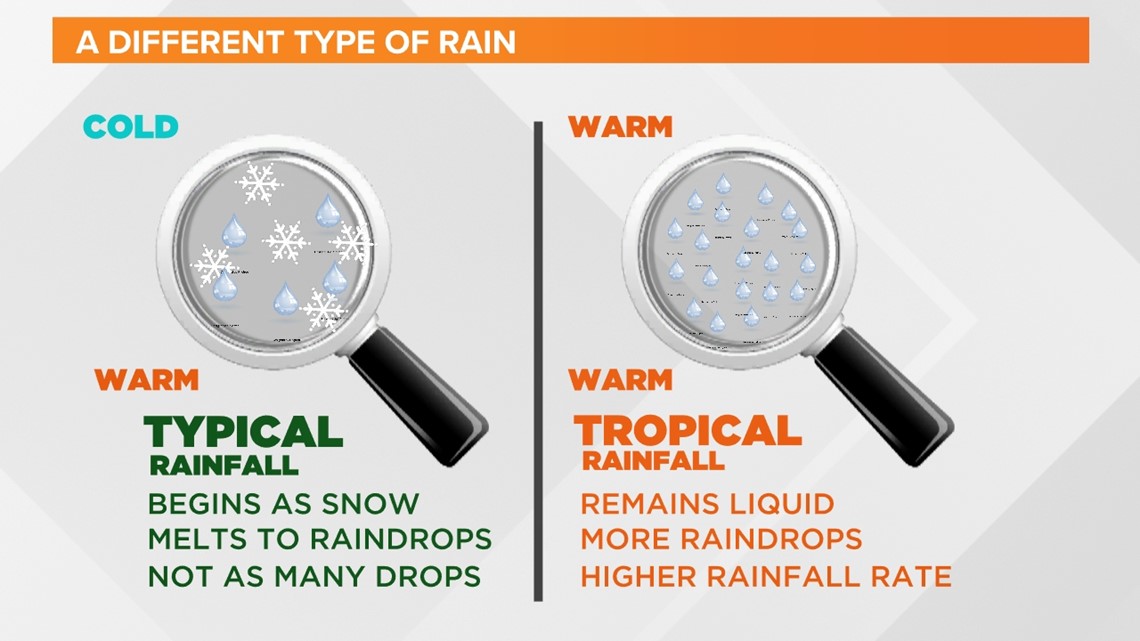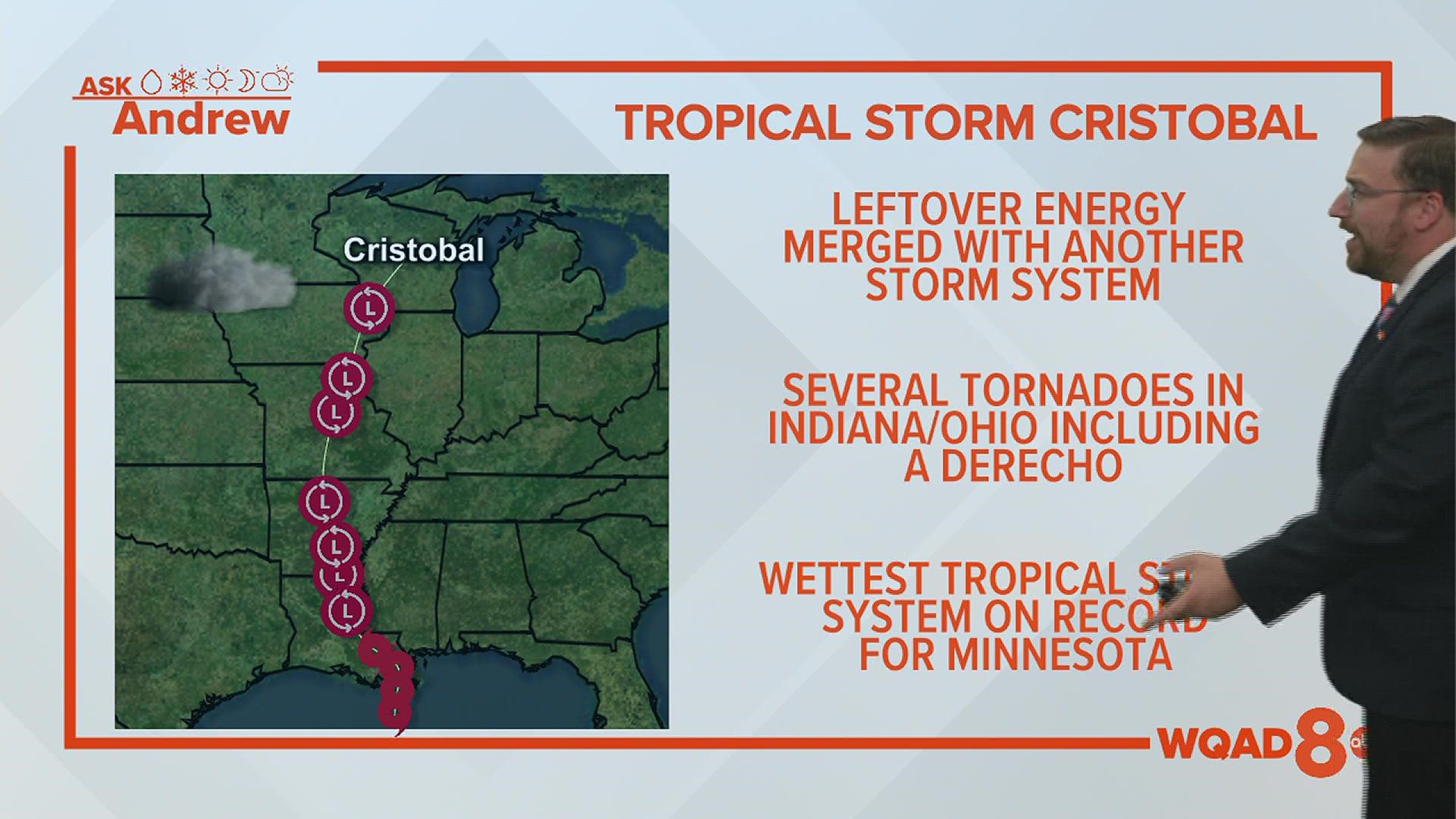MOLINE, Ill. — The 2020 Atlantic Hurricane season remains the most active season on record, with a total of 31 tropical or subtropical storms developing in the span of six months. Seven of these storms went on to become major hurricanes (category 3 or higher) tieing the record set back in 2005. One of these storm systems lived a unique double-life if you will. Once as Tropical Storm Amanda before crossing Central America and re-forming as Tropical Storm Cristobal. in late May and early June.
Cristobal makes landfall
Tropical Storm Cristobal made landfall in Louisiana on June 7th. The storm then weakened into a tropical depression before making its way north into the Midwest. At the same time, another storm system was moving east through the same region. The two systems combined created a post-tropical cyclone that brought high winds and heavy rainfall to many areas including Iowa, Minnesota, Illinois, and parts of the Ohio Valley. The storm also spawned a derecho that would go on to spin up at least three tornadoes in parts of Ohio and Pennsylvania.


Very high levels of moisture courtesy of the tropical moisture pulled northward with the original storm system brought very heavy rainfall to much of the Midwest, including multiple reports of more than four inches of rain across portions of Iowa. According to the National Weather Service, several reports of flooded roadways, creeks, and streams were sent in from various agencies. Some rivers also saw quick rises with a few reaching near to well above flood stage.
Tropical rains differ from traditional rains
A traditional storm system that impacts the Midwest several times a year often involves a cold rain process, meaning temperatures a certain height from the ground is colder than those at ground level. However, warm rain processes, involved with all tropical and post-tropical storm systems, involve warmer air throughout the atmosphere from the ground up.


It's this warm rain process that produces the most widespread and heaviest rainfall because there are more raindrops concentrated in a specific area versus a cold rain process.
Have a question that you would like me to answer for an upcoming Ask Andrew segment? Submit it, here!

